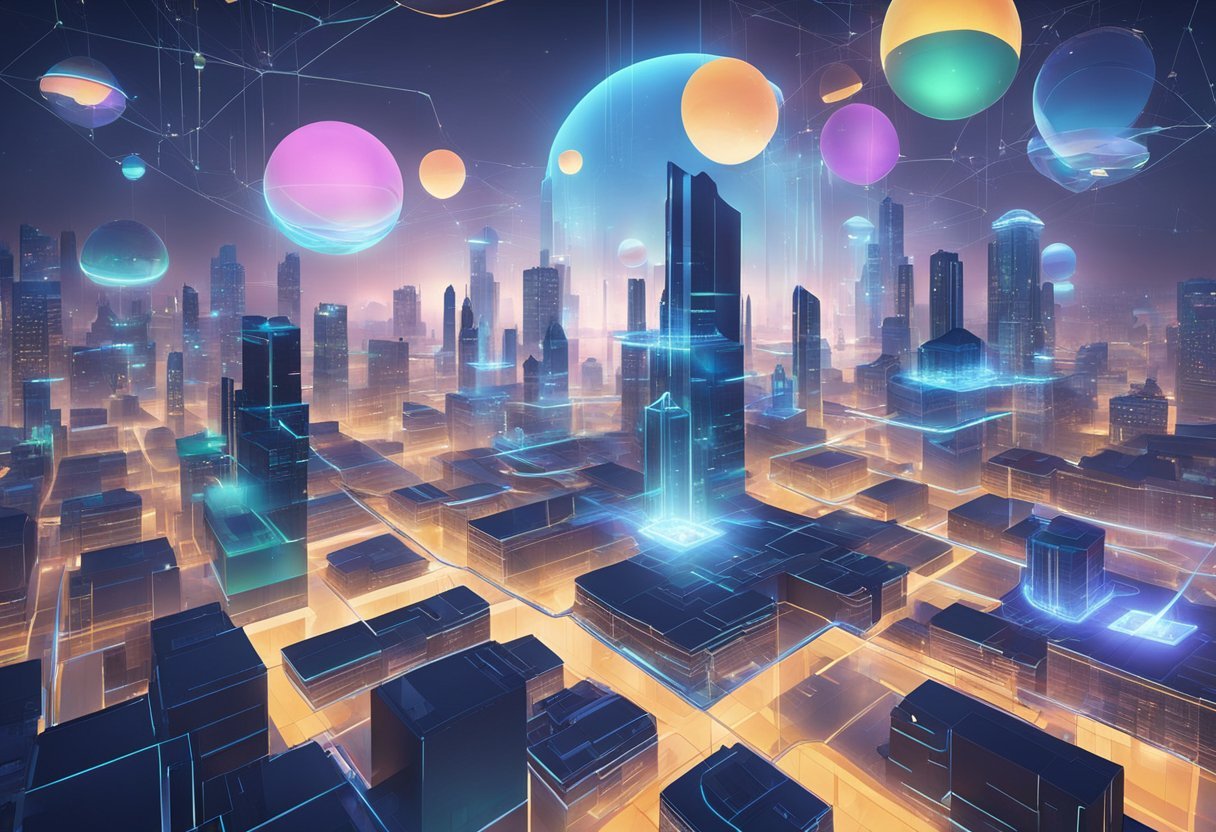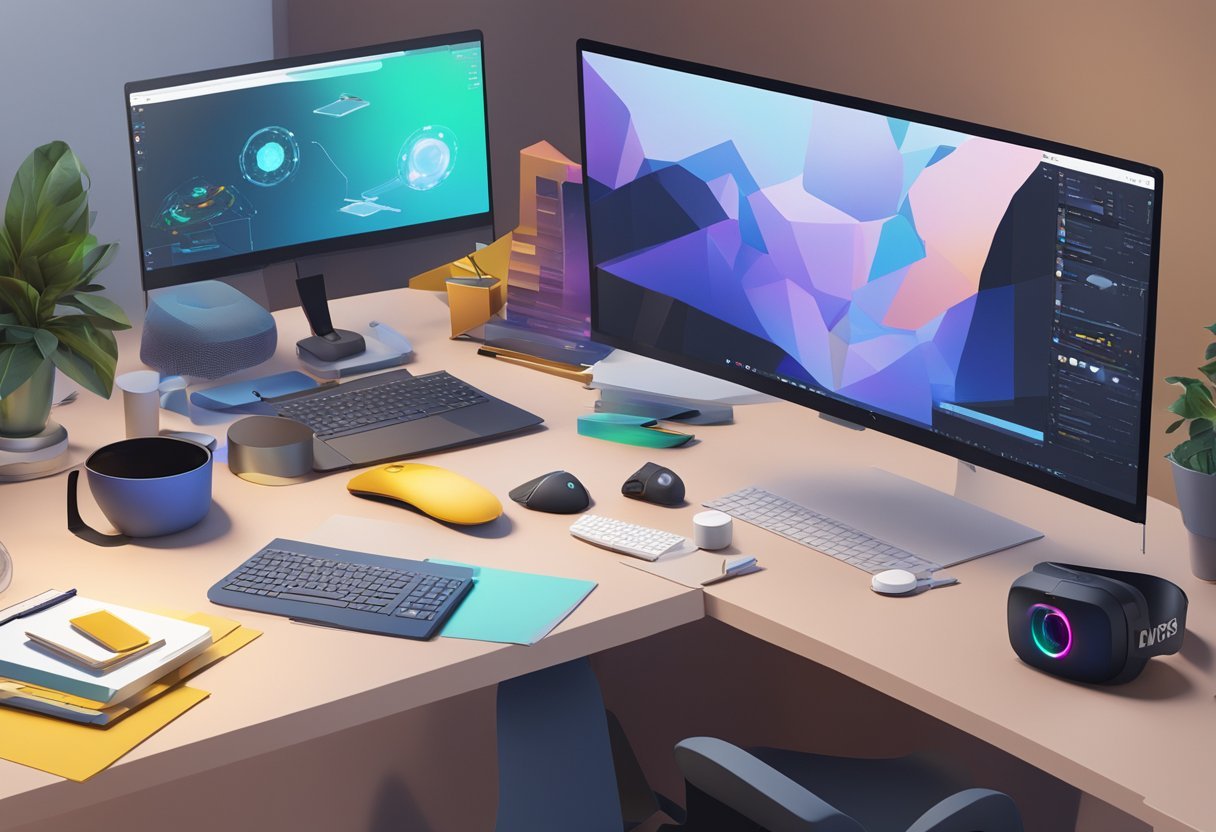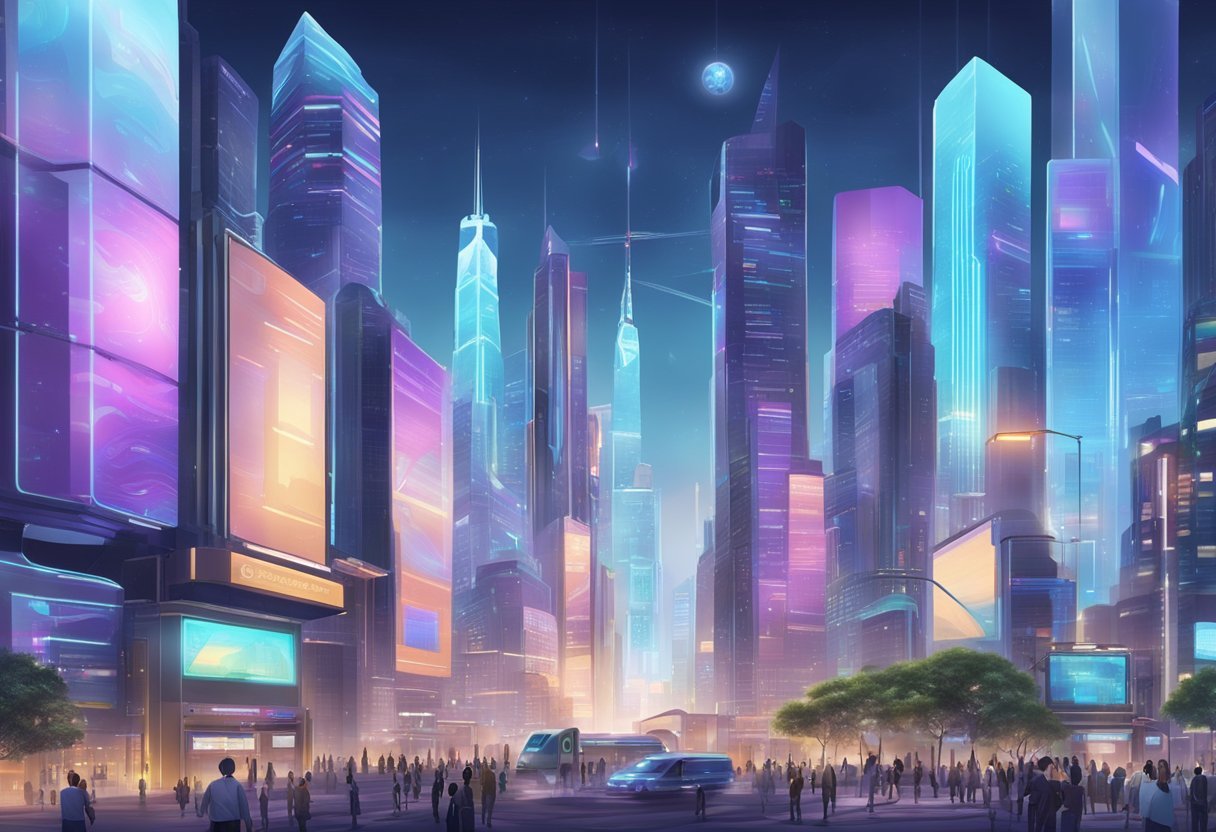Metaverse designs have been a hot topic in recent years, with many architects and designers exploring the possibilities of this virtual world. The metaverse is a term used to describe a collective virtual shared space that is created by the convergence of physical and virtual reality. It is a space where people can interact with each other and digital objects in a virtual environment.
Designing for the metaverse requires a new approach to architecture and design. It involves creating spaces that are not limited by physical constraints and that can be experienced in a completely different way. Metaverse designs can include anything from virtual buildings and landscapes to interactive experiences and games. The possibilities are endless, and designers are only just beginning to scratch the surface of what is possible in this new virtual world.
Foundations of Metaverse Design
What is Metaverse Design?
Metaverse design is the process of creating virtual worlds, environments, and experiences that users can interact with through digital devices. It is a multidisciplinary field that combines art, technology, and user experience design to create immersive and engaging virtual experiences.
Metaverse design is becoming increasingly popular due to the rise of blockchain technology, which allows for the creation of non-fungible tokens (NFTs) that can be used to represent unique digital assets within the metaverse.
How is the Metaverse Designed?
The metaverse is designed using a combination of 3D modeling software, game engines, and blockchain technology. Designers use these tools to create virtual environments, characters, and objects that users can interact with.
They also create user interfaces and experiences that enable users to navigate and interact with the virtual world. Blockchain technology is used to create NFTs that represent unique digital assets within the metaverse, such as virtual real estate, clothing, and other items.
Features of Metaverse Design
Metaverse design has several key features that distinguish it from other forms of digital design. These features include:
- Immersive Environments: Metaverse design aims to create immersive environments that users can explore and interact with. This requires a combination of 3D modeling, game design, and user experience design to create a seamless and engaging experience.
- User-generated Content: The metaverse is designed to be a collaborative space where users can create and share their own content. This requires designers to create tools and interfaces that enable users to create and upload their own content, such as 3D models, animations, and other digital assets.
- Blockchain Integration: Blockchain technology is a key feature of metaverse design, as it enables the creation and exchange of NFTs that represent unique digital assets within the metaverse. This requires designers to have a deep understanding of blockchain technology and how it can be integrated into the metaverse.
Metaverse design is a rapidly evolving field that requires a combination of art, technology, and user experience design to create immersive and engaging virtual experiences.
As the metaverse continues to grow and evolve, designers will need to stay up-to-date with the latest tools and technologies to create compelling virtual experiences for users.
Metaverse Architecture and Spatial Design
Designing for Digital Real Estate
Metaverse architecture and spatial design have become increasingly important as virtual worlds continue to grow. Architects and designers are now tasked with creating digital spaces that are not only visually appealing but also functional and immersive. The design of virtual real estate is a complex process that requires careful consideration of the user experience, the aesthetics of the space, and the technical requirements of the platform.
Architects and designers must also consider the unique challenges of designing for the metaverse. Unlike physical spaces, virtual spaces are not bound by the laws of physics, allowing for more creative and imaginative designs.
However, this also means that designers must be mindful of the potential for motion sickness and other issues that can arise from overly complex or disorienting designs.
Virtual Worlds and Spatial Aesthetics
Virtual worlds offer a unique opportunity for architects and designers to explore new forms of spatial aesthetics. The metaverse allows for the creation of environments that are not limited by the physical constraints of the real world, allowing for the exploration of new forms, shapes, and materials.
Designers must also consider the unique challenges of designing for virtual spaces. Unlike physical spaces, virtual spaces are not bound by the laws of physics, allowing for more creative and imaginative designs.
However, this also means that designers must be mindful of the potential for motion sickness and other issues that can arise from overly complex or disorienting designs.
Metaverse architecture and spatial design offer a unique opportunity for architects and designers to explore new forms of spatial aesthetics and to create digital spaces that are both visually appealing and functional.
However, designers must also be mindful of the unique challenges of designing for virtual spaces and must consider the user experience, the aesthetics of the space, and the technical requirements of the platform.
Digital Identity and Avatars
Creating Digital Avatars
In the metaverse, digital avatars are representations of oneself that can take on various forms, from humans to animals to inanimate objects. Creating a digital avatar involves customizing its physical features, clothing, and accessories to reflect one’s unique style and personality. The design of a digital avatar can also be influenced by cultural backgrounds, aspirations, and even gender expression.
To create a digital avatar, one must first choose a platform that supports avatar creation and customization. Some popular platforms include Second Life, Sansar, and VRChat. Once a platform is chosen, users can select a base model for their avatar and then customize it with different hairstyles, clothing, and accessories.
The Significance of Identity in Virtual Spaces
Digital identity is an essential aspect of the metaverse, as it allows individuals to establish their presence and interact with others in online environments. Avatars serve as visual representations of one’s digital identity, and they can be used to express oneself, build relationships, and even conduct business.
In virtual spaces, digital identity can be shaped by various factors, such as the appearance of one’s avatar, the activities they engage in, and the communities they belong to. T
he ability to customize avatars and create unique identities can foster a sense of individuality and self-expression. However, it is also important to consider the impact of digital identity on real-world identity and the potential risks associated with online interactions.
Top 5 Metaverse Designs
Metaverse designs are becoming increasingly popular as more people seek to immerse themselves in a virtual world. Here are the top 5 metaverse designs that are pushing the boundaries of what we thought was possible in the digital realm.
- Lifelike Virtual Humans – One of the most exciting developments in the metaverse is the creation of lifelike virtual humans. These digital avatars can interact with users in a way that was previously impossible, allowing for a more immersive experience.
- NFT House – Another exciting development in the metaverse is the creation of NFT houses. These virtual homes are created using non-fungible tokens, which allow for unique and one-of-a-kind designs. Users can buy and sell these NFT houses, creating a new market for virtual real estate.
- 3D Modeling Tools – As the metaverse becomes more realistic, designers need to master 3D modeling tools like Blender, Cinema 4D, and Houdini. These tools allow designers to create more realistic and immersive environments for users to explore.
- Virtual Marketplaces – With the rise of NFTs, virtual marketplaces have become a popular way for users to buy and sell digital assets. These marketplaces allow users to trade everything from virtual real estate to digital art, creating a new economy in the metaverse.
- Enterprise Applications – While the metaverse is still in its early stages, there are already enterprise applications being developed. These applications allow companies to create virtual offices and meeting spaces, making it easier for remote teams to collaborate and work together.
The metaverse is an exciting new frontier for designers and users alike. With new technologies and innovations being developed every day, we can expect to see even more incredible metaverse designs in the future.
Frequently Asked Questions
What are the core principles of design within the metaverse?
Design within the metaverse is centered around creating immersive experiences for users. The core principles of metaverse design include creating environments that are visually appealing, easy to navigate, and that provide a sense of presence and community.
Designers must also consider the unique challenges of creating digital spaces that are accessible to a diverse range of users, including those with disabilities.
How does user experience (UX) design differ in metaverse applications compared to traditional digital platforms?
UX design in the metaverse requires a focus on creating immersive and engaging experiences that go beyond traditional digital platforms.
Designers must consider the user’s entire journey within the metaverse, from entering the space to interacting with other users. This requires a deep understanding of user behavior and the ability to create intuitive interfaces that are easy to navigate.
What software tools are essential for architects designing spaces in the metaverse?
Architects designing spaces in the metaverse require a range of software tools, including 3D modeling software, virtual reality tools, and game engines. Popular software tools include Unity, Unreal Engine, and Blender. These tools allow architects to create immersive environments and test their designs in real-time.
How can virtual reality (VR) inspire innovative design approaches in the metaverse?
Virtual reality is a powerful tool for inspiring innovative design approaches in the metaverse. VR allows designers to create immersive experiences that go beyond traditional digital platforms, enabling users to fully immerse themselves in the environment. This can lead to new and innovative design approaches that push the boundaries of what is possible in the metaverse.
What educational paths are available for those looking to specialize in metaverse architecture?
There are a variety of educational paths available for those looking to specialize in metaverse architecture. Many universities now offer courses in virtual reality and game design, providing students with the skills and knowledge needed to excel in the field.
There are a number of online courses and tutorials available that can help aspiring metaverse architects develop their skills.
How is the concept of The Row influencing metaverse design trends?
The concept of The Row, which refers to a series of interconnected virtual spaces, is influencing metaverse design trends by emphasizing the importance of community and social interaction within the metaverse.
Designers are now focusing on creating virtual spaces that encourage interaction and collaboration, with an emphasis on creating a sense of community and belonging. This trend is likely to continue as the metaverse continues to evolve and grow.




